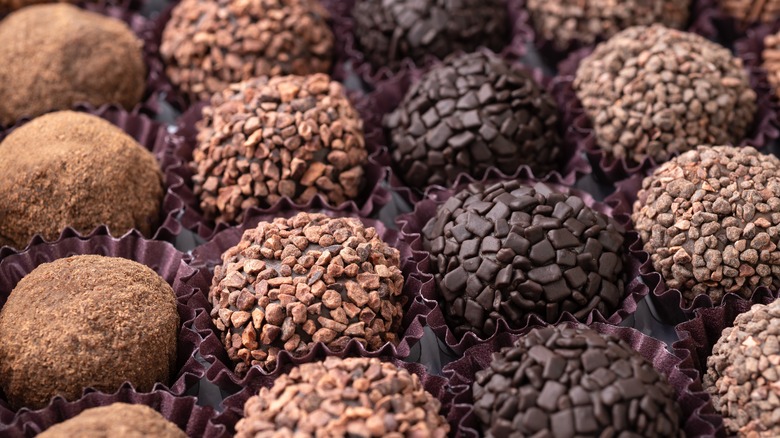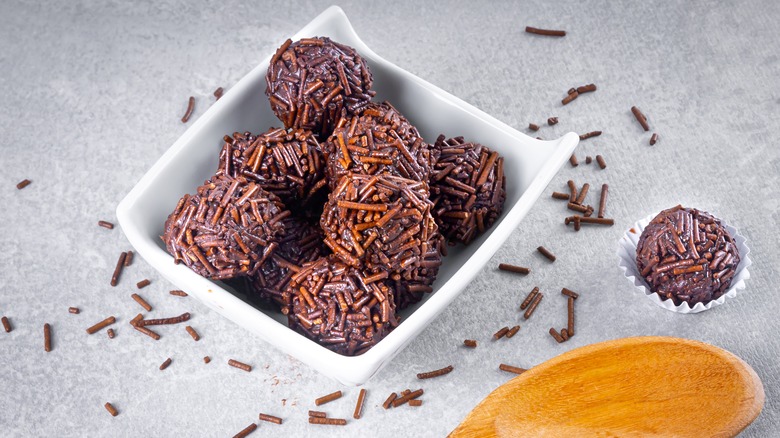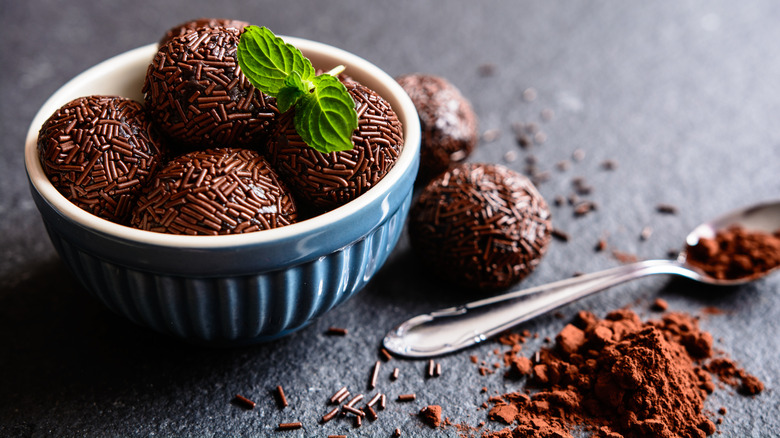Brazil's Iconic Brigadeiros Have A Political Past
The received history of those delectable little Brazilian chocolate truffles known as brigadeiros has everything: a handsome political candidate, women's suffrage, post-war rationing, and the culinary triumph of resourcefulness over scarcity. It's also likely wrong — at least to the origin of the sweet, if not the name. While it's entirely true that the dessert became associated with the (failed) 1946 presidential candidacy of Air Force Brigadier Eduardo Gomes (thus the origin of the name "brigadeiros"), it's likely that these little candies made from condensed milk, butter, and cocoa powder already existed and were simply utilized for political promotion.
How cool is that, anyway? Why make boring old buttons and posters of your favorite political candidate when you can hand out little chocolatey treats at meetings instead? When it comes to brigadeiros, it's as worth looking into the history of its name and origin as it is eating one (or three — they're freakin' delicious).
Brigadeiros: Celebrating political eye candy
Immediately after the close of the Second World War, Brazil held a presidential election — which was significant in another way: This was the first time all women could vote in that country's national election. (Some women — widows, salary earners, and those who were married and had their husband's permission — had been able to vote since 1932, but everyone got the right by 1945.) Brigadier Gomes was a social reformer and presidential candidate for the progressive National Democratic Union party. He was also, as it turns out, single and not unattractive.
These supplemental qualities did not go unnoticed by the new female voting demographic, whose homegrown slogan "Vote no brigadeiro, que é bonito e é solteiro" ("Vote for the brigadier, who's handsome and single") was ultimately adopted as a campaign slogan. To raise money for the campaign, female supporters in Rio de Janeiro sold bite-sized chocolate truffles they called brigadeiros at political rallies because their guy was clearly a legit snack. These were made from condensed milk, butter, and cocoa powder — ingredients that were widely available despite lingering wartime rationing. The treats were so popular that the brigadeiros proliferated — even though Gomes lost the election — and are now considered a uniquely Brazilian dessert. The only problem is that this confection almost certainly predates the post-war election.
Negrinhos: The more humble origin story
In 1890, the Nestlé corporation introduced their Milkmaid sweetened condensed milk to the Brazilian market. By 1921, the corporation opened its first domestic factory in the country, renaming the product Leite Moça (which is much prettier, but still just Portuguese for "condensed milk"). This type of preserved dairy item was a huge success because domestic refrigerators wouldn't become available in Brazil until 1947.
Differing accounts suggest that proto-brigadeiro sweets were already being made in the '20s, either in São Paulo (with Leite Moça being combined with high-quality chocolate powder manufactured by the local Gardano factory), or Rio Grande do Sul, where it was dubbed (and is still known as) the negrinho, or "little black man." It figures that such a popular treat has many origin stories; we all know that success has many fathers. Feel free to make your brigadeiros or negrinhos rolled with chocolate sprinkles, maybe even with a cherry inside, and call it what you like.


